When you think of a pickup truck, the first words that come to mind are usually sturdy, bulky, strong, reliable, etc. The same thing happens when you think about Chevrolet, as the company has positioned itself over the years as one of the most sturdy and reliable car manufacturers in the United States. When you take a look at the Chevrolet Corvair ’95 Rampside, however, what you think of is more along the lines of a dollhouse or a kid’s toy.

This behemoth of childhood dreams was quite rare at the time, as only 3,200 vehicles were put into production in 1961 and 1962. It didn’t take long for Chevy to realize that this cute thing wasn’t going to be the first, second, or last choice for anyone interested in pickup trucks. It was discontinued shortly after, although, in today’s more diverse age, you might just find yourself a few truckers who would go for the childish look.
The Ram 1500 TRX Was Great – Mostly
The Ram 1500 TRX was able to hit a top speed of 118 miles per hour. It was bigger, faster, and it even had better handling than a lot of other Rams. Engine problems? Not too bad. Cab issues? Not here. So what's the problem with this truck?

Well, if you want to take advantage of all that power with all that extra weight, you'd better be ready to be a regular at the pump. Depending on how you drive, you might not even reach double digits when it comes to miles per gallon.
The Dodge Ram SRT-10 Had Cheap Parts
When Dodge pulled the beefy 8.3-liter V10 out of a Viper and plunked it into one of their Ram pickups, they thought they were geniuses. But their genius got the better of them during the 2004-2006 model years.

The Viper's V10 put out a lot of power and thus put a lot of stress on other components. In order to keep the maintenance costs down for the SRT-10, they swapped some of the parts out for cheaper options, which made them more likely to fail. These parts included clutch hydraulics, oil lines and coolers, power steering parts, and the shifter. It's also a gas guzzler – according to some owners, netting only nine miles per gallon.
The 2011 GMC Sierra 3500 Has Major Problems
GMC wants all of its heavy-duty machines to be dependable and strong, but not all of the model years have turned out that way. The 2011 model of the Sierra 3500, in particular, is somewhat of a low point in the company's history. Reported problems include the Emission control devices that cost a lot of money to repair.

There are also transmission issues, which are always pricey, and if not addressed as soon as possible, could ruin the whole car. Numerous other problems, such as difficulties getting gas in the tank and bad oil leaks, were also reported.
The 2021 GMC Canyon's Price Tag Isn't Worth It
With a price tag that is eyeing fifty grand, the 2021 GMC Canyon seems like a pricey option. Unfortunately, that high cost doesn't translate into high quality this time. Several publications realized the problems with the model and gave it sub-par scores. While its scores saw a slight improvement over last year, it still has reliability issues.

People also stated the uncomfortable driving position, as well as a stiff, choppy ride. Since the cost of this mid-size truck can get so expensive, many people decided it would be better just to move up a step and go for the full-size.
The 2021 Ford Ranger Is Cheap
Yes, the 2021 Ford Ranger is an affordable option if you need a truck, but spending a little bit more will be better off for you in the long run. With a Consumer Reports score of 46 out of 100, the Ranger is the current black sheep of the Ford family.
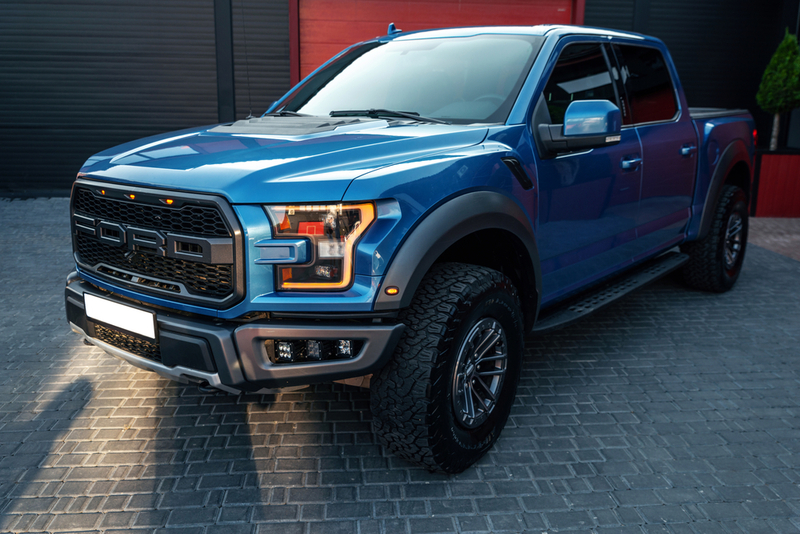
The worst part is apparently the fuel economy – something that is at the forefront of people's minds when buying a new car. Cheap isn't always good, and when it comes to vehicles, sometimes you get just what you paid for.
The 2021 Chevrolet Colorado Isn't Reliable
On Consumer Reports' list of the ten least reliable vehicles of the 2021 model year, this Chevy was one of only two pickups present. It earned only 44 out of 100, the worst score of any Chevy.

This Colorado model has low fuel economy, barely any comfort features inside, and an unreliable construction that just couldn't handle the wear and tear people often put on their trucks. Consumer Reports stated that if you're itching to add a compact pickup to your stable, then spend a bit more and get the Honda Ridgeline instead.
The 1961-1966 GMC Pickups Were Ugly and Stiff
GMC has been the name to follow when it comes to trucks for a long time, but even they have some skeletons in the closet. The 1961-1966 pickups had a flat, boxy roof that outweighed its wheels, meaning the body often hung low on the axles.

While the engine and features themselves presented no big problems for the day, the design turned a lot of people off, and many still call it one of the ugliest trucks ever. The small wheels made turning a scare sometimes, but at the very least, GMC was able to learn from their mistakes and improve.
The 2003 Silverado Quadrasteer Never Caught On
In 2003 Chevy tried to make a unique truck that would make hauling and towing tasks easier – the main feature was that steering would turn all four wheels, increasing maneuverability and control.
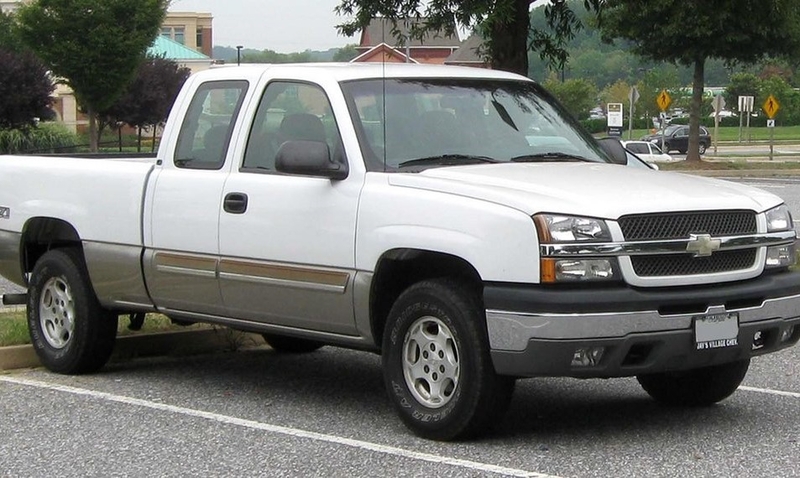
In practice, it was hard to figure out, and the design of the rear axle was prone to numerous failures. The Quadrasteer took numerous styling cues from the standard Silverado model, but the advantages its features brought never outweighed the problems, repair costs, and learning curve that they also required. This car just never caught on.
The 1999 Chevy Tahoe 2-Door 6.5L Diesel Is Rare and Infamous
Even if you're a car or truck fan, you might not have heard about this model from Chevy. Only about one percent of the Tahoes of this generation were made in a diesel configuration, so finding them on the road is uncommon and was even rare when they first came out.
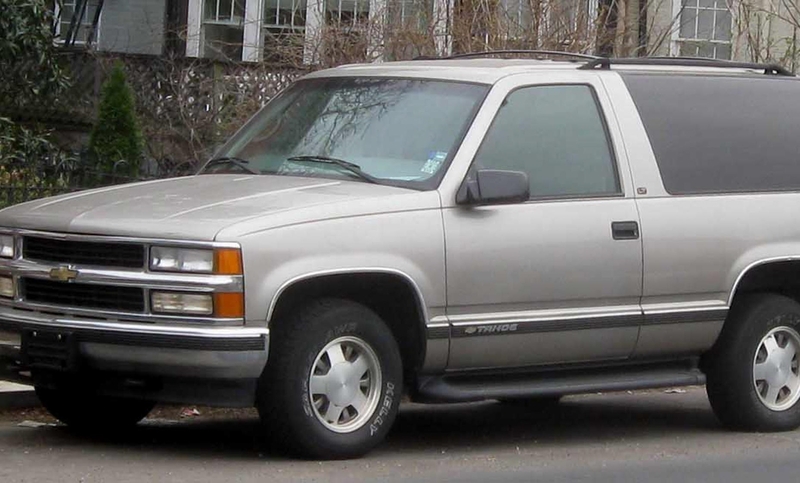
There's also the fact that it was one of the worst models that Chevy ever developed — as soon as they rolled off the line, repair costs started to mount, and many buyers were warned away. If you do happen to catch one of these still on the road, thank your lucky stars.
The 1987 Chevrolet Silverado V6 Was Pointless
The 1987 model year of the Chevy Silverado V6 is famous, but not for the right reasons. It was vastly underpowered, unable to keep up with any of the other Silverados that were released before or after it.

The engine was of questionable construction, and it couldn't deliver enough oomph against the truck's weight. Chevy had come up with this model as a way for people to get a large (at the time) truck without having to pay for a V8, but the trade-offs made it a pointless buy. Most people realized they were better off just shelling out for the bigger engine.
The 2004 Chevy Colorado I-5 Didn't Impress Consumers
The 2004 model year Chevy Colorado was supposed to replace the aging Chevy S10, but the weak I-5 engine (based on designs from Isuzu) just couldn't compete with other engines on the market. With five cylinders, it didn't offer much power, and, placed inside a midsize truck; it wasn't going to get anyone charged up.
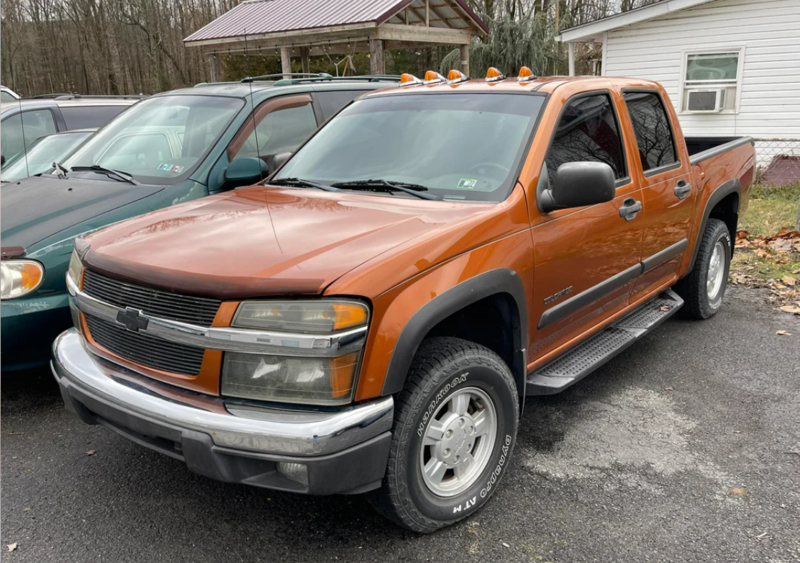
In comparison, the 2004 Dodge Dakota included a magnum V8 – as soon as it hit the market, the 2004 Colorado was underpowered. Later on, Colorado got an upgrade thanks to the Silverado 5.3 L V8 engine, but that was hardly the only problem with the car.
The 1972 Chevrolet LUV Was Barely a Chevy
Chevy's first mistake when it came to the LUV was branding it as an all-American model at a time when all three of the big U.S. automakers were importing Japanese trucks. Well, the LUV was anything but all-American since it featured numerous parts and design elements from overseas manufacturers.

There's also the fact that its engine put out a minuscule eighty horsepower, about as powerful as a compact car like the Geo Metro at the time. The engine did get good gas mileage, but people expected more from a Chevy at the time, and the LUV faded quickly.
The 2004 Chevrolet Silverado Hybrid Was a False Hybrid
The 2004 Chevy Silverado Hybrid came about at a time when people were beginning to wonder if huge gas-guzzling trucks were the right thing the go for. Chevy promised a pared-down truck experience that would be more economical and ecological. At first, the Silverado Hybrid lived up to the promise and even had some cool features in the cab.
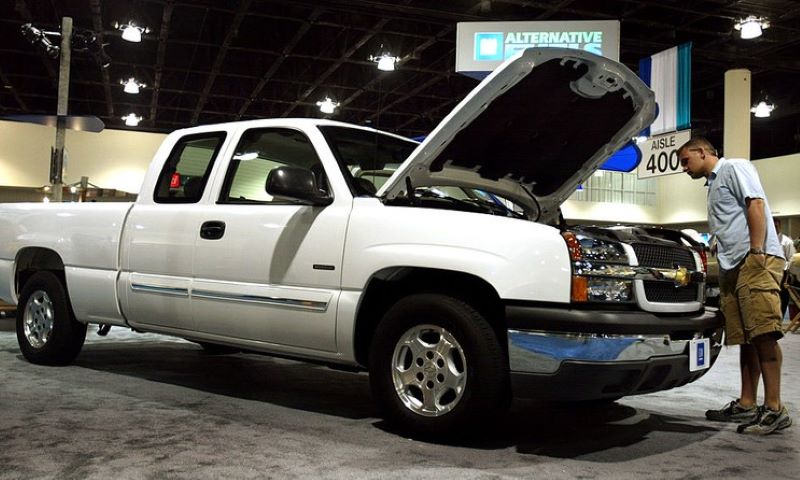
However, people eventually realized that it only had about a two mpg advantage over a standard model, and for less towing space and features, it was too little.
The Ford Super Duty 6.0 L Is the Worst Modern Diesel Engine
The engine in the Ford Super Duty 6.0 L was so bad it resulted in a legal battle between Navistar (Powerstroke's parent company) and Ford. The issues are numerous and heavy, including a head gasket problem and an absolute disaster of a fuel system rife with failures and leaks.

The worst part is to get at these problems; it was common to have to remove the entire cab of the truck, meaning repairs took forever and cost a wad. With those kinds of issues waiting to drop, would you pick this truck up? Not likely.
The Chevy and GMC C/K 6.5 L Was a Mechanical Failure
After the 6.2 L engine faded away like a bad joke, Chevy and GMC developed a new engine with the help of craftsmen in Detroit — the 6.5 L. However, it still suffered in multiple areas, including indirect injection and poor output, averaging only 180 HP.

Compared to the Powerstroke Ford engines from the same time, it was outclassed. There were mechanical problems, too: the pump-mounted driver was a common failure point, which caused starting issues, stalling while driving, and more. Truck drivers learned to stay away and buy elsewhere.
The Chevy and GMC C/K 6.2 L Had a Weak Engine
After their attempts to make their own diesel engines sputtered, GM decided they would buy engines from someone else. They hired engine maker Detroit to build the next diesel engine and ended up with an uneconomical and weak 6.2 L engine. Despite being a big size, the engine produced a shockingly small amount of power, a mere 130 HP.
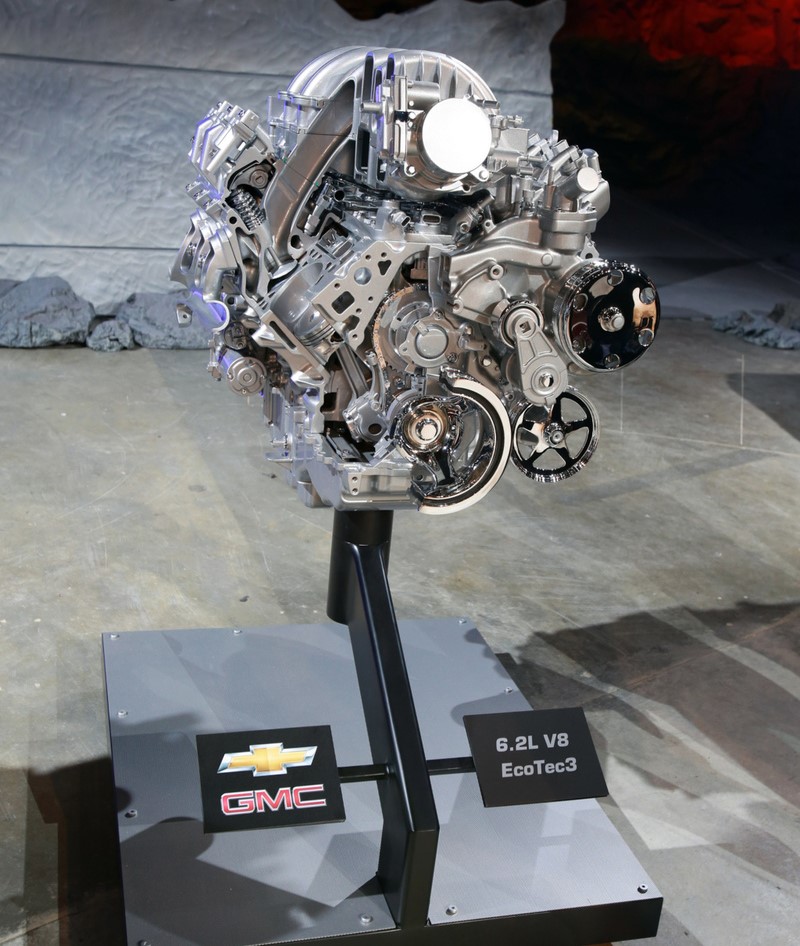
That's only about forty more than your average Smart car. What's worse, the 6.2 also had a bad oil leak problem. It kept oil costs high, and repairing the break meant removing the entire transmission.
The 2020 Ford F-250 Gets It Wrong Everywhere
According to Consumer Reports, the Ford F-250 is the worst pickup of the 2020 model year. Ouch. Of the eight full-size trucks that CR tested, it had the lowest ratings across the board, even though it was still rated well for its towing capabilities.

The 2020 Ford F-250 got a mere 15 miles per gallon, a shockingly low number, but the thing is, they aren't really used for traveling long distances – they're for towing and hauling. Still, you'll end up paying more for repairs, you'll have a cramped interior, and paying that much for gas is enough to give anyone pause.
The 2008 Nissan Frontier Had Extra Costs
The oft-maligned Nissan Frontier makes a few appearances on this list, but the 2008 model year might be the worst one of the bunch. The radiator issues of the 2005 Frontier were bad, and the myriad issues that the 2006 model year presented were worse, but there are few car problems more aggravating than transmission issues.

The 2008 Frontier had a terrible transmission that required extensive and expensive work if it cropped up – and it cropped up for a lot of people. For most, the idea of paying both for an expensive truck and for the transmission problems was too much. Nissan wasn't able to work out the problems, and the car tanked.
The 2014 Chevy Silverado Will Start to Look Gross Soon
The different models of the Chevy Silverado have appeared here and there on this list, but most of them have been well-received – winning awards and garnering critical acclaim. It doesn't hurt that, for the most part, they're handsome, tough trucks. The 2014 Silverado model, however, had a weird issue: peeling paint.

For some reason, this year's offering from Chevy had a bad outer appearance issue that truck owners didn't like. Getting a new coat of paint costs a bundle, and even just touching up the peeling sections would be a lot of time and a fix that wouldn't last. In addition, this model also had a faulty A/C system.
The 1993 Toyota T100 Was Far Too Small
Toyota's first effort in the full-size half-ton pickup market was the 1993 T100, but it just didn't fit the bill. While the bed was just as big as domestic offerings, the lack of a V8 engine turned American buyers off. Toyota tried to add a blower to the V6 engine it had but supercharging it didn't help at all.

While the actual construction of the truck didn't have any issues, it didn't sell well at all in the States, and Toyota had to revamp the construction. They replaced the T100 with the Tundra in 2000, which sold better, though still didn't become king of the hill by any stretch of the imagination.
The Lordstown E-Truck Had One of the Worst Launches Ever
Futuristic and flashy, the Lordstown Motors Endurance E-Truck is supposed to be the first electric truck to hit the United States market. The launch of the vehicle, however, had lots of audio and other technical problems – which mirror the truck’s issues.

Problems getting the truck up to snuff have pushed production from late 2020 to late 2021, which wasn't helped by the whole pandemic thing. The launch also offered little about the truck itself, but it did say that it was going to be, essentially, a 75 mpg truck. Hopefully, Lordstown can deliver on those promises, or it won't last much longer.
The On-road Credentials of the Toyota Hilux Aren't Great
Readers in the United States might not be familiar with this line since it isn't sold in America. This truck does tend to be reliable and well-tested, but driving it is another matter.

It's noisy while driving at high speeds, doesn't corner well – it feels like the wheels are going to leave the road – and the ride is bouncy when it isn't under a load. Worse, the engine is somewhat overpowered, so if you are hauling something, you'll be going through a lot of fuel. The cabin is narrow, and the dashboard elements don't seem up-to-date to most drivers.
The Isuzu D-Max Is Noisy and Messy
While the performance of the Isuzu D-Max from 2018 and 2019 isn't too terrible, there are plenty of things that keep this pickup from being anything special or worthwhile. Chief among the issues is the extensively loud engine when you're driving – you can hear every clatter and bump.

Vibrations from the engine come through the gear shift and steering wheel – the only time you can't hear it is when it's replaced with wind noise at high speeds. The ride quality is poor, and reports say the truck's body leans at even the slightest turns. It's not without its positives – there's plenty of hauling room.
The Fiat Fullback Cross Is Just a Beefed-up Mitsubishi L-200
The Fiat Fullback Cross has a hard time even making space for itself in the market since the Fiat L 500 was voted as one of the most unreliable vehicles in a poll from Consumer Reports.

In fact, the Fullback is the exact same truck as the Mitsubishi L-200, which has its own history of problems, the least of which was rust. The interior is cheap and drab and has quite a narrow loading space, with a capacity that lags behind the competition.
The 2008 GMC Sierra Was Rushed Into Production
The 2008 model of the GMC Sierra had barely left the production line when all the problems began to show themselves. The fuel sensor and engine lights didn't work, the ABS pump wouldn't turn off, coolant and oil had to be changed far more frequently than they should have been – and door handles broke off.

This cheaply made car was a huge black mark on the GMC name. The Sierra line has had its ups and downs, but that year's model is one that everyone looking for a truck should avoid at all costs.
The Reynolds Boughton RB44 Is a British Footnote in Truck History
Back in the day, a company called Renault was bought out by Dodge in the UK, but they had one last chance to try and make their own product before it was just Dodge with the Renault name. So, they made the Reynolds Boughton RB44, nothing short of a disaster of a truck.

Let's put this truck's failures this way: driving in a straight line was fine, but anything else was going to leave your heart pounding. It was ugly, it didn't run very well, and the British armed forces were forced to use them a lot, so they developed a deep hatred.
The GMC Syclone Was a Weird One
If you're a fan of a certain look, then the Syclone might be in your wheelhouse. However, it didn't exactly impress as a pickup truck. In 1991, GMC released this new model, and naysayers were quick to point out its small carrying capacity, unreliable off-road control, and how you couldn't even tow with it.

Somehow, this truck ended up being faster than a Ferrari 348, but that's about the only thing that's to its credit. Only three thousand were produced, and GMC quietly let the line disappear before moving onto the Sonoma GT truck, which was just the Syclone with a bunch of differences.
A Redesigned 2016 Toyota Tacoma Still Had Problems
While not as poorly reviewed as the 2013 model, the 2016 Tacoma had its own issues to deal with. The big problems included bad engine vibrations and a slow automatic transmission in the cold that made getting up to cruising speed annoying.

It was less than a joy to drive, and a startling number of reports also seemed to mention a “loud noise” coming from the driver's side door while at highway speeds. At the very least, it wasn't coming apart like earlier models of the truck, but this is still one to stay away from.
Early 2010s Dodge Ram HD Was Wild on the Road
During the early 2010s, the Dodge Ram line was plagued with issues, and the HD model suffered for several years as well. The last thing you want while driving a heavy-duty truck (that's what the HD stands for) is feeling like you aren't in control of yourself or whatever you're hauling, and that's just how many felt from 2012 to 2015.

Uncontrollable steering and powerful vibrations made drivers uncomfortable while on the road. There was more: the Dodge Ram's shaky suspension makes a return, and something that drivers and reviewers called a “death wobble” was a big problem as well. That is a very unfortunate name.
The 2015 Chevy Colorado Could Barely Shift
The 2015 model of the Chevy Colorado was supposed to be a return to form for the problem-plagued pickup. However, it still suffered from problems. It had fixed many of the issues that had cropped up when the line first debuted, but 2015 had a pathetic transmission.
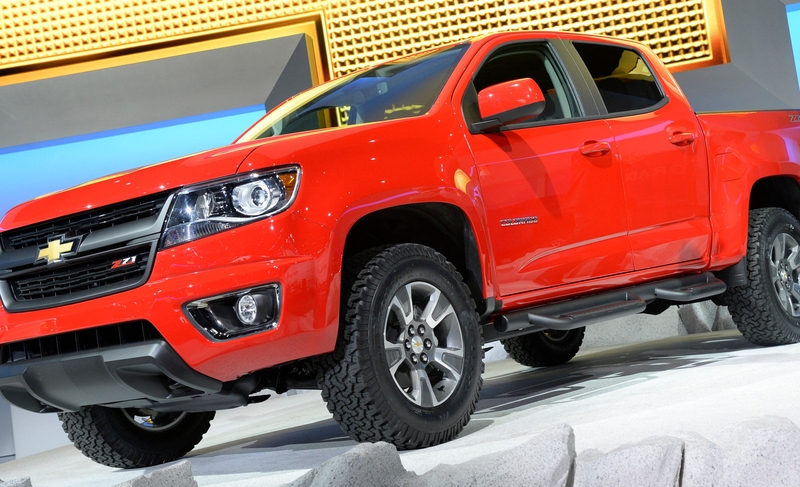
The biggest issue seemed to be slow downshifting, which meant the truck couldn't take full advantage of the otherwise powerful V6 engine. However, it was still a big step forward for the line. The rust issue – so far at least – seems to have been fixed.
The 2010 Ford F-150 Had a Faulty Transmission
A piece of wisdom says there are two things you fix in a vehicle right away: the brakes and the transmission. The 2010 Ford F-150 suffered from a bad six-speed transmission that plagued the entire model, causing vibrations while driving, inconsistent shifting, and difficulties changing gears unless you put your back into it.

However, this problem disappeared when the 2011 model rolled off the line. For such a legendary line of trucks, the F-150 has had its fair share of issues, but at least this one didn't last very long.
The 2007 Chevrolet Silverado Was an Oil Guzzler
Silverado appears on this list a couple of times, but we don't hold that against them. They have plenty of examples of quality trucks. We can't say that about the 2007 model, unfortunately, which had the bad problem of burning through oil at a record pace, which caused a lot of other problems.

The solution was a total engine replacement, a job that can cost around six or seven thousand dollars – a painful price for any car owner. At the very least, we can still say that 2007 was a good-looking truck. Even compared to today's models, the design holds up.
The 1978 Chevrolet C/K Diesel's Borrowed Engine Couldn't Keep Up
For the most part, the Chevy trucks that rolled off the line during the seventies were reliable and dependable, but the 1978 Chevrolet C/K Diesel had one big problem – the engine.

It was a Diesel 5.7 Liter V8, which the line borrowed from Oldsmobile, and it could only deliver 125 horsepower. Not only was it underpowered for what a truck demanded, but it was also extremely unreliable. All sorts of problems like emissions issues and head gasket breaks eventually led to this model being buried in bad reviews. Thankfully, it was just a blip on the Chevy timeline.
The 1999 Ford Ranger Is One of Ford's Worst
Ford has plenty of great trucks on the market (though some of their offerings have appeared on this list as well), but the 1999 Ford Ranger should have gone back to the drawing board long before it hit the roads. The reliability was nowhere near what Ford buyers were used to, leading to pricey repair bills and unhappy customers.
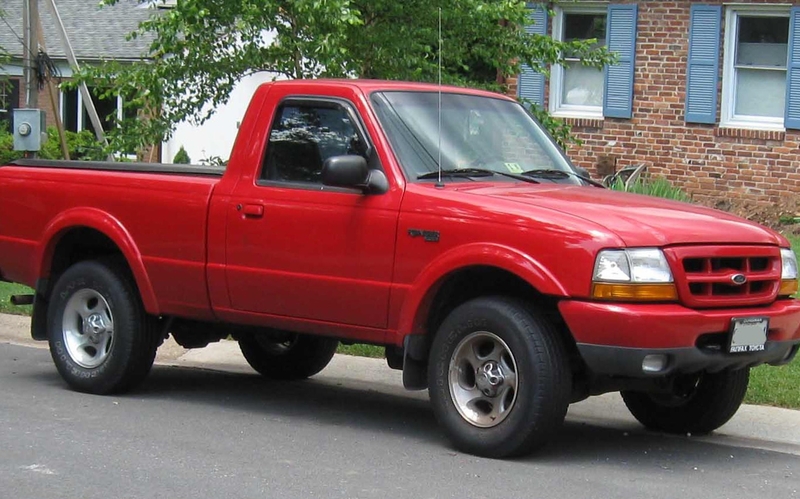
The problems stemmed from erratic engine gauges, which led to numerous issues such as the transmission. The bill to get this problem fixed was north of three grand, and many people decided that it wasn't worth it for a truck that kept breaking down anyway.
The 2005 Nissan Frontier Was Hot – Too Hot
The Frontier was a game-changer for pickup trucks. The 2005 model, however, suffered from something that made it change for the worse. The radiators had a serious flaw that led to a bevy of problems, including transmission issues (one of the worst things) and lots of overheating. Cracks in the radiator and undercarriage became more and more common and required a lot of repair work.

Nissan jumped on the problems, trying to correct them quickly, but the radiator problem in this line continues, ruining an otherwise stellar pickup design that benefited from a lot of space and a comfortable ride.
The 2012 Ram 2500 Got Recalled Again and Again and Again
Even those who don't frequent truck lists know about the Dodge Ram. They're dependable and strong, but even this line produced a stinker. The 2012 model got positive points for hauling power, speed, and reliability, but then the complaints started to flood in.

Shifting without touching the brakes caused the truck to spin out of control. In addition, the engine had some bad coolant issues – which sometimes led to flames. The truck was recalled five times thanks to these issues, and Dodge suffered from bad press for a little while.
The 2001 Toyota Tundra Was a Rust Bucket
Toyota had some quality control issues at the start of the new millennium, and the 2001 Toyota Tundra was one of the models that suffered because of it. The issue that came up first was that it rusted far faster than other trucks on the market at the time.
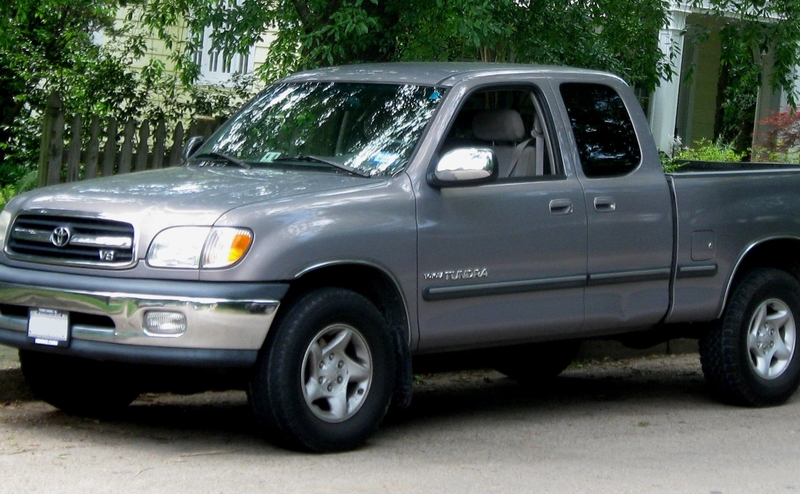
This model ended up getting recalled six times – rust might be a visual problem for the most part, but it was bad. Spare tires broke loose due to rusting, and brakes were failing. For a truck called Tundra, not being able to stand up to the elements was embarrassing.
The GMC Envoy Merged Pickup With SUV
Getting creative with their designs is something that every car company loves to do – maybe they'll be the ones to start a new trend. The GMC Envoy attempted to combine a pickup with an SUV, but they put too much emphasis on the SUV portion, sacrificing the space that a pickup truck needs to function.

GM took the concept a little too far, essentially just creating an SUV that they marketed as a truck. The truck crowd wasn't interested, and the SUV crowd didn't want it either. They didn't even sell the benchmark ten thousand units, and the line came to an end.
The 2005 Chevy Silverado Is the Black Sheep of the Family
When truck aficionados speak of the Silverado, it's usually with a gleam in their eye. Unless they're talking about the 2005 model, we could talk about brakes that rusted quickly, steering that made this big hunk hard to handle, and engine issues that made it a pricey car to own, and we'd just be getting started.

The model had a lot of promise – it had plenty of power, as well as hauling and towing capabilities, but all of the other issues meant when people are talking about the best trucks, this one isn't on the list.
The 2005 Toyota Tundra Had an Awful Engine
The Toyota Tundra is an example of what happens when a model that is initially considered to be horrible manages to stick in the market just long enough for its maker to pull it up by its bootstraps and update it accordingly. Originally launched in 2000, the Tundra was considered a sort of joke in the pickup truck category and couldn’t really compete with its largest rivals. It only got worse for the weak pickup truck in subsequent years, culminating in the horrible 2005 Tundra, which is considered one of Toyota’s worst trucks to date.

Fortunately for the company, they eventually decided to pick things up a notch, likely due to the embarrassment of the executives when they had to show the poor performance and sales figures of the car to their shareholders. Two years after the release of the abysmal 2005 Tundra, Toyota came out with the 2007 version of the truck and really managed to get their act together. The new truck was faster, more reliable, and overall much more competitive, taking it from a semi-joke to one of the most popular trucks on the market.
The 2006 Honda Ridgeline Was a Huge Disappointment
Honda raised many eyebrows when it first unveiled its Ridgeline model. This brand's new truck was the company's first attempt at finding its way into the pickup market. It was a great-looking pickup that followed Honda’s build to the letter and was instantly recognizable as part of the automaker's lineup. If that’s not enough, this truck was no quick cash grab either, as the Ridgeline took about four years and tens of millions of dollars to research and produce. In fact, it was built from the ground up, and unlike the Ford Courier, it wasn't just a copied version of one of their competitor's vehicles.

Despite all the love, effort, and cash that went into the making of the Ridgeline, it just couldn't live up to its expectations and received extremely poor reviews. One reviewer commented: “The Ridgeline can’t really do what most people who like trucks need it to do. Sure, some homeowners and weekend warriors may actually need a 10,000-lb towing capacity, but the Honda Ridgeline is probably just right for most.” It was also called the “anti-truck” by another reviewer.
The Explorer Sport Trac Didn’t Quite Find Its Market
When Ford wanted to make a compact pickup truck, they chose to take an SUV and turn it into a truck by adding a flatbed in the back. Simply taking the Explorer's cargo and putting a small bed in it instead isn't that much of a good idea. Instead of copying an existing model, it would have been much better if the automaker had designed a new model from the ground up.

Ford’s Explorer Sport Trac lacks a lot of the quality that you'd find in some of the auto maker's better pickups, and it also costs quite a bit of money. Instead of going for the Ford Explorer Sport Trac, we recommend that you get the much larger and more reliable F-150 which is known as one of the best pickup trucks of all time.
The Chevrolet Avalanche Got Drivers Fined With Speeding Tickets
Pickup truck enthusiasts and consumers were extremely excited when Chevrolet, the American automaker, finally revealed its newest pickup truck — the Avalanche back in 2001. This was supposed to be the next big thing from Chevrolet, and Americans everywhere thought that this was going to be their next pickup truck. If the hype was so big, how is it that the truck was discontinued in 2013, just two generations later, and that you can only buy this one on a used truck list nowadays?

The reason for this sudden twist in events for the Avalanche was that the truck suffered from horrible speedometer issues, causing people to get pulled over because the monitor was showing the wrong speed. The Avalanche was criticized by customers for having transmission failures and quickly guzzling up the truck's oil. While it might have been worth a fix, the Avalanche name became tarnished, making it better for the company to just let go of the truck instead of trying to fix it. Two of America’s most popular pickup trucks are next on this list, as they suffered from terrible reliability issues in their early days.
The F-250 and F-350 Had Their Fair Share of Problems Too
The 2000s were a tough time for Ford. As the United State’s leading car manufacturer, especially in the pickup category, they knew that competition was coming from left and right, which forced them to do whatever it takes to stay on top. Unfortunately, this rush to being first place did take its toll in various years throughout the decade, which caused the F-250 and F-350 to also be riddled with a myriad of issues. The worst years in terms of problems for these vehicles were 2006, 2008, and 2011. Luckily the automaker got its act together by the time the new decade rolled in.

These versions of the F-150 and F-250 suffered from frequent engine failures, which caused the trucks to stop working either mid-drive or right before starting up the vehicle. Other issues included weird shaky suspension, which caused customers to return their trucks to Ford in a sort of silent recall. The F-250 also had a few problems specific to it, such as breaking prematurely and accelerating for no reason while driving.
The Dodge Ram Daytona Was Also More Looks Than Power
Dodge's Ram brand is known today as one of the fiercest competitors when it comes to heavy-duty trucks and SUVs. Anyone who's seen the scary Ram insignia on top of the even scarier car grill can instantly recognize exactly what kind of car they're looking at. The company definitely nailed it when it came to looks with their 2005 Ram Daytona, which attempted to take over a large part of the pickup truck market.

The car looked like a bulky Goliath and had a grill that could cause little children to cry. Unfortunately, if you actually looked under the hood, you'll be quite disappointed. In what appears to be the best demonstration of the phrase "barking dogs don't bite," this pickup truck is much more focused on looking nasty than actually being nasty. It's basically the same error that the Mazda B-Series made, with the most obvious ramifications — the car was discontinued that year.
The 2006 Nissan Frontier Transmission Disaster
When Nissan first introduced its 2006 Frontier pickup truck, audiences were quite excited by the shiny new vehicle. Unfortunately, the car failed miserably to live up to its expectations, as it ended up being a horrible nightmare when it came to transmission. Seven of these vehicles were recalled by Nissan due to safety risks, and let’s just say that people weren’t exactly happy about it.

The recalls were a very problematic PR nightmare for Nissan, as it was later found out that the car had cases of the fuel system, suspension, and engine malfunctions which all lead to possible crashes. If you see this car on the cheap in used car shops, there’s a good reason why, and it’s not because you found a great bargain. This is one pickup truck to avoid, as if your life depends on it (because, to some extent, it does).
The 1972 Ford Courier Was Underbuilt
Some cars are only related to their manufacturers by name. Such is the case with the 1972 Ford Courier, which was quite a disgrace even for a car in the early ‘70s. This pickup truck was basically a slightly varied model of the Mazda B-Series. Ford basically started making the Courier in 1952 and stopped in 1962, but when it wanted the car model to make a comeback, they just paid Mazda for the rights to use their B-Series model instead of developing one of their own. Imagine basically buying a Mazda B-Series that has a Ford badge on it. This is how far the company went in terms of effort to make their version of the pickup truck unique.
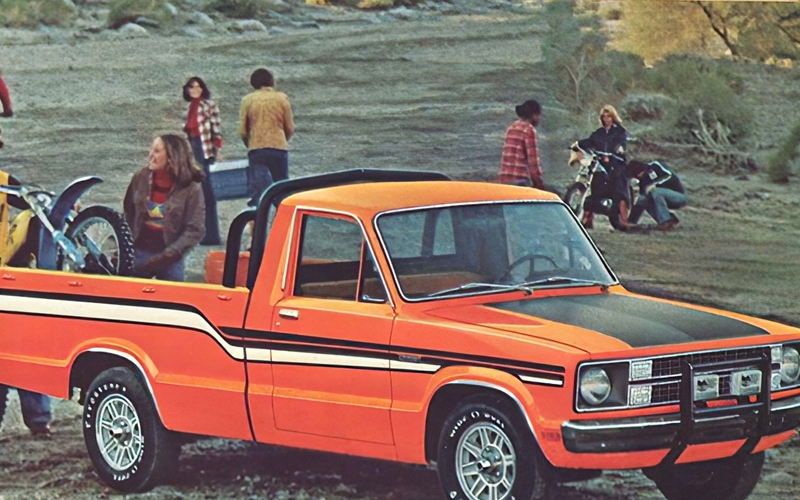
Obviously, this was picked up by consumers, and eventually, Ford had to make adjustments. No wonder why they basically pulled the plug and started all over again just four years later. The 1977 Courier was finally a true Ford vehicle and was based on a similar engine to that of the Mustang II and Ford Pinto. Almost everything had changed in the car except the headlights and a few minor details. Unlike its previous monstrosity forefathers, this model served the company well into the mid-'80s.
The 2002 Subaru Baja Didn't Earn Many Fans
Subaru took another crack at the pickup market, which they hoped would work better than the BRAT. This time they actually took the time and resources to develop a real pickup truck rather than a coupe with a flatbed attached to its rear. They hoped that the car would attract new consumers, marketing it as an adventure vehicle for offroad fun rather than a classic work pickup truck.

Unfortunately for the automaker, the marketing didn’t exactly capture the consumers' interest, and the Baja was cursed with awful sales for four straight years until Subaru decided to discontinue it in 2006. Nowadays, instead of being remembered as a nostalgic truck or something to be fond of, it’s mostly looked upon as a joke, like one of those times your uncle quit his job and created a start-up only to end up regretting the whole thing.
The 1999 Chevy Silverado Was Sluggish and Terrible
When you talk about one of the most iconic brands of pickup trucks, the Chevy Silverado easily takes the cake. This American company is well known for building reliable, strong, and efficient cars that are tailored specifically to the American markets. Many people swear by the Chevy Silverado 1500 and consider it one of the best pickup trucks in the world. It boasts a turbo diesel engine with over 13,000 pounds of towing power and a mean look that says, "don't mess with me."

The 1999 Chevy Silverado, however, was absolute garbage of a truck. For some odd reason, the car manufacturer decided to put one of the worst engines possible inside their flagship vehicle, which made it very sluggish and all-around terrible. Fortunately, the company realized its mistake and proceeded to fix this engine problem within a few short years, eventually turning the Silverado brand into the popular one it is today.
The 1976 Dodge Ramcharger Had Optional Passenger Seats
The 1976 model of the Dodge Ramcharger was originally called the "Rhino," probably due to the large animal's nature. It actually even came standard with just a driver’s seat, with the passenger seat being an optional addition to the vehicle.
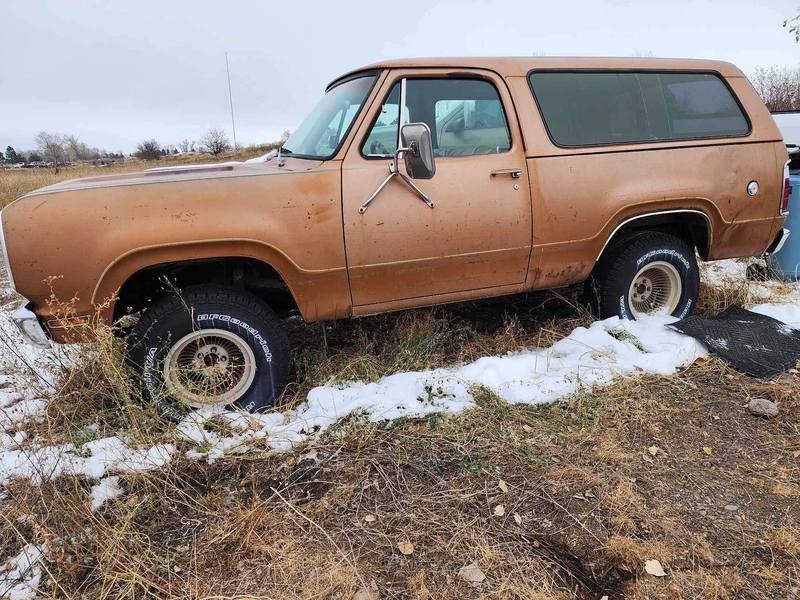
This sounds quite useful if you're the type of person who always drives alone, but unfortunately, the car’s overly clunky engine and low power made it a poor choice. The 1976 Dodge Ramcharger wasn’t the worst of the worst, but over the years, the company managed to substantially increase the quality of its pickups.
The Chevrolet K2500 Became Rusty Over the Generations
Right from its start, Chevrolet has always been known as one of the leading car companies in America. This automaker was the home of Confederate flag owners way before it stopped being cool and continues to be so to this very day. The Chevrolet K2500 saw its debut in 1959 and was an amazing addition to the company's lineup of trucks. It sold extremely well for a very long time but eventually began losing its steam towards the end of the millennium.

Over time the classic truck's features stopped getting updated, and by 1997, the Chevy K2500 left us with a bit of a rusty ending. Apparently, these vehicles were a serious safety hazard, as they would gather dust along with the cross member beneath the driver and passenger seats. This was Chevrolet's due to perhaps stop the madness and let the old model die in peace in 2001, replacing it with the super popular Chevrolet Silverado.
The Jeep Wagoneer Had Serious Engine and Suspension Problems
Although we consider Jeep to be one of the most successful and popular SUV and pickup truck makers in the world, you knew that it would have to show up eventually on this list with its large collection of vehicles. The truck in question here is the 4x4 Jeep Wagoneer, which was loaded with problems despite being specifically built for serious offroad action.

The IFS Wagoneer of the early '60s faced the worst issues, mostly around the truck's engine and suspension. This caused it to become a lot less popular than other trucks in Jeep's lineup. It’s a good thing that the only bad truck we can point out for the long-running car manufacturer is a very old one. It seems that Jeep is really one of the most reliable SUV and truck manufacturers in the country.
The GMC Sierra Is Highly Unreliable
GMC definitely has its share of great pickup trucks. The GMC Sierra 1500 is considered to this day to be one of the best pickup trucks on the market. Unfortunately for GM, the company didn't quite manage to recreate the magic when they created the Sierra 2500HD. Both vehicles were definitely competitive; however, what they competed on was not quality, but the lack of it.

The Sierra 2500HD suffered from an awful fuel system, minor transmission parts, and overall, it lacked integrity when it came to the truck's body. This GMC truck has been suffering for years now from horrible reviews, with a rating of 16% on Consumer Reports in some metrics. It's also considered to be a very unreliable work truck, so if you're looking for a serious pickup to help you tow heavy things, this is probably not the one for you.
The Ram 3500 Couldn't Keep Up With Appearances
The Ram 3500 Was Extremely Unreliable When you think of a serious work truck, one of the first images that come to mind is the bulky and menacing grill of the Ram 3500. This beast has the looks of a true goliath, with a thick and scary grill, large wide headlights, massive tires, and a look that says, "don't mess with me, or I'll tow you." Let's just say that this is one car that you do not want to crash into. Luckily, that won't happen since the truck apparently malfunctions quite often and was actually selected as the “least reliable vehicle you can buy" by Consumer Reports.

While the Ram 3500 appears to be extremely tough on the outside, it's actually a very problematic vehicle from the inside. Many customers complained about the truck's suspension, steering, fuel system, and transmission. So next time you see this one on the road, feel free to feel sympathy instead of fear and respect. But maybe keep some distance anyway.
The 2013 Toyota Tacoma Was Too Old for Its Time
As technology improves and competition raises consumer standards, car manufacturers are expected to adapt their vehicles with all the latest technologies of the time, with respect to the car’s price, of course. This competition does an excellent job of keeping car technology constantly improving while maintaining enthusiasm from consumers who come back year after year to see the new products (instead of car owners just using the same vehicle for many years). The 2013 Toyota Tacoma was an example of a car that didn’t manage to keep up with the times and failed miserably because of it.

This pickup truck was poorly reviewed right from its debut. It had no visible improvements over the previous generation of Tacoma and had not offered any new technology or performance updates worth mentioning. This was a fine car for your average worker but far below the standard for a tech-savvy or even slightly knowledgeable consumer. The truck was recalled six times due to faulty parts that increased the risk of a crash. It took three more years for Toyota to finally update its model. Luckily for them, the changes were just what consumers wanted, and the debacle of the 2013 version was immediately forgotten.
The 2009 Hummer Was an Absolute Disaster
Hummer is best known for being one of the most prominent military vehicles currently in use by the US military. It’s a tough, sturdy, and absolutely monstrous piece of metal that makes the enemy flee in fear. At the same time, Hummers work extremely well when it comes to military use. When it comes to public consumers, however, this vehicle is an absolute disaster. Doug DeMuro, a popular car reviewer, called the Hummer “the most embarrassing vehicle you can drive.” If you ignore the extremely negative stereotype that Hummer drivers get, this one was still very much unfit for regular drivers.

The 2009 Hummer was extremely expensive, very hard to drive, drank gas like it was water, was immensely difficult to park, and very uncomfortable to sit in. There's a good reason why Hummer stopped producing these for consumers in 2010, and you have the reason why right here. In today’s climate of fuel efficiency, comfort, and high technology, there’s absolutely no reason to buy a Hummer, which is why you don’t see them on the road anymore.
Ford’s F-150 2004 and 2005 Models Had Many Issues
The Ford F-150 is hands down the most popular vehicle in the United States, especially when it comes to the pickup category. Despite its popularity, the 2004 and 2005 models of the truck have been riddled with various issues, from spark plugs breaking off to loud noises from the motor and even engine failures, which cause the cars to completely shut down.

There were many other issues related to the 2004 and 2005 models of the F-150, and we’re not surprised that Ford was quick to pick up on them. If they would have taken even one more year to do so, there is a strong chance that the F-150 would not have been in the excellent place that it is right now. We can only hope for continued improvements and for Ford to make sure that future versions of the truck are as problem-free as possible.
The Mazda B Series Was Seriously Weak
One of Mazda’s first ventures into the pickup truck lineup was the Mazda B-Series, a pickup truck so weak that you could barely do anything with it. When you look at its design and road handling, everything seems perfectly normal. However, this all changes when you finally get some dirt action and try using it to haul some heavy-duty stuff. Mazda essentially chose to make the car more fit for the road than the actual offroad terrain it was supposed to have been made for, all in the name of efficiency.

The Mazda B-Series turned out to be one of the worst-performing pickup trucks ever. While it may look like a pickup truck, what’s under the hood is not that in the least. The company stopped making pickup trucks in 2009 after realizing how horrible they were at producing them and instead outsourced the work to Isuzu, who collaborates with the former on next-generation pickup trucks for North America.
Ford Bronco Isn’t as Fun as You'd Think
When you're looking to purchase a pickup truck for entertainment purposes only, there's a good chance you'll find yourself taking a look at Ford's Bronco model, which puts in all the fun of driving a 4x4 on the bumpy off-road terrains while offering some of the features and benefits that you'll often find in a pickup truck such as towing capabilities.

Unfortunately, this car was mired with various problems under the hood for many of its versions and still continues to have problems to this day. Of course, people who are buying Broncos won't be reading this article or listening to this advice anyway, but sometimes you have to preach to the deaf. You might have a huge smile on your face when first purchasing this 4x4 monstrosity, but you won’t be as happy when you find yourself having to tow the car from the side of the road.
The RAM 1500 Had Terrible Reliability Issues
Depending on the year in which you bought your Ram 1500, you could be looking at a range of issues. The car's third generation (2002-2009) suffered from very common exhaust manifold bolt breakage, which almost got to the point of recall. The fourth generation (2009 to 2018) had a lot of issues with the TIPM (Totally Integrated Power Module), which caused the truck to malfunction. The 2019 version of the Ram 1500 has been relatively problem-free for the time being.

It’s extremely important to make sure that pickup trucks are reliable prior to selling them, especially those that rely heavily on electronic systems. These trucks are often carrying heavy equipment in very challenging terrains, so a malfunction in one of these fields could result in a massive loss of money and a potential safety risk for everyone involved. We’re glad to see that Ram has been picking up the pace on preventing these issues, although more can certainly be done.
The Ford Thames Trader Was an Ugly Hunk of Metal
Ford's old Thames Trader models were the closest thing you can find to a real-life version of a car from Pixar's Cars movie or something that would appear in a car-themed spinoff to 'Thomas the Tank Engine.' The Thames Trader was a range of trucks designed by Ford and marketed almost exclusively in the UK from 1957 until 1965.

London eventually turned these vehicles into double-deckers which took cyclists through the Dartford tunnels, with the lower deck being used for parking bicycles and the higher one (accessible by ladder) for sitting. It's definitely one of the ugliest trucks ever made, and it's no surprise that the company discontinued the lineup in the mid-'60s
The 2018 Mercedes Benz X-Class Wasn’t Quite Elite
Mercedes, the luxury German automaker, generally manages to keep up with its customers' high expectations due to the brand's association with luxury, the latest tech, and some obviously premium prices. That's why when Mercedes released the X-Class, customers were absolutely willing to spend the extra dollars to purchase this $45,450 to $87,500 pickup truck just based on the brand it was made by.

Mercedes didn't try to avoid the luxury association and even embraced it by calling this car "the world's first true luxury premium pickup." While the X-Class was certainly luxurious, it was also a horrible pickup truck. With a small flatbed and an underwhelming performance, many customers chose to skip this one in favor of a more traditional pickup that would be cheaper, stronger, and function better for its job. If you seriously want a Mercedes and don’t mind the short flatbed, you should probably go for the BRABUS D6 - X 350D 4MATIC, an ultra-powerful version of the car that goes for almost $100,000.
The 1957 Ford Ranchero Was a Fake Pickup Truck
Subaru must have taken the inspiration for their BRAT model from Ford’s 1957 Ranchero, another car that basically got a flatbed stuck to its rear end and began calling itself a pickup truck. Ford obviously knew that the Ranchero was far from being a genuine pickup truck but still chose to market it as such. This move was a very unpopular one among consumers who had very high trust levels in the Ford brand.

Fortunately, the company learned from its mistakes, especially after the backlash and lower sales figures, and released a smaller version of the Ranchero that was appropriately defined as a car rather than a truck. The new model was called the Falcon Ranchero, probably because Ford was hoping to fly as far away from their 1957 PR disaster as possible.
The Chevrolet Corvair Looked Like A Toy Truck
When you think of a pickup truck, the first words that come to mind are usually sturdy, bulky, strong, reliable, etc. The same thing happens when you think about Chevrolet, as the company has positioned itself over the years as one of the most sturdy and reliable car manufacturers in the United States. When you take a look at the Chevrolet Corvair ’95 Rampside, however, what you think of is more along the lines of a dollhouse or a kid's toy.

This behemoth of childhood dreams was quite rare at the time, as only 3,200 vehicles were put into production in 1961 and 1962. It didn't take long for Chevy to realize that this cute thing wasn't going to be the first, second, or last choice for anyone interested in pickup trucks. It was discontinued shortly after, although, in today’s more diverse age, you might just find yourself a few truckers who would go for the childish look.
The 1976 Cadillac Mirage Was Real
Cadillac’s weird attempt at creating a pickup truck was one of the company’s most disastrous creations. The automaker is usually known for making some of the most luxurious and high-quality American vehicles you can find on the market. This is why the 1976 Mirage just looks like a bad joke. This car was a hybrid between a coupe and a pickup truck, which basically removed the backseat of the car and slapped a long flatbed on instead. It was extremely expensive at the time and had very little functionality both as a truck and as a vehicle.

The Mirage was extremely unpopular with consumers, and Cadillac reportedly only sold a few hundred vehicles of its kind. We assume that most of the purchases had nothing to do with towing or off-road driving but were mostly constituted of gangsters who needed an extremely convenient car to dump bodies in. We’re joking, of course, because this car would make you stick out like a sore thumb. Cadillac was quick to notice that nobody was interested in this trashy car and quickly disposed of it from its lineup. The Mirage was gone, almost as if it was just an illusion.
The 2002 Lincoln Blackwood Was Tiny
Lincoln is well known for producing some of the most luxurious high-end town cars currently on the market. It's one of the last few remaining companies that have managed to keep their old-school charm and traditional look while updating themselves with the latest in advancements in-car tech. Unfortunately, when Lincoln attempted to stride their way into the pickup truck market in 2002, the results were much worse than expected and led to the creation of one of the most unusable pickup trucks in the world.

In a great example of why companies should stick to their strengths rather than trying to focus on their weaknesses, Lincoln’s 2002 Blackwood pickup truck lacked many key things that a great pickup needs to have — It had a small interior, a tiny bed, and it lacked durability. All of these made the car extremely unattractive and resulted in Lincoln giving up on their quest to create the next great pickup truck almost immediately.
1997 Ford Ranger Had a Horrible Transmission
Ford is well known both in the United States and across the globe as being a great vehicle company. The manufacturer produces some of the best cars in the entry-level market and is the maker of the most popular and longest-lasting muscle car of all time, the Ford Mustang. That’s why when Ford came out with the 1997 Ranger pickup truck, expectations were high as usual. Unfortunately, the company put one of the worst transmissions of any pickup truck in history inside it.

The car had some relatively good specs, which made it even sadder that the main reason that it became such a hated vehicle was its crappy transmission. A few examples of the 1997 Ranger's horrible transmission include upshifting failure, loss of gears, gear slipping, loss of reverse gear, solenoid failure, and a delayed gear shift response. Even Mercedes tried its luck in the pickup truck market but failed miserably with the now-forgotten X-Class.
The Chevrolet Colorado Suffers From a Small Flatbed and Low Reliability
When Chevrolet released Colorado, its goal was to create a great competitor in the compact pickup trucks market. The model was extremely close to doing that but failed to hit the target due to two major problems. First, although it was built as a compact pickup, the flatbed was way too small for most consumers, making it easy to skip on it despite the truck’s advantages.

The next problem with Colorado stems from its low reliability due to having a faulty climate system, suspension, and fuel system. It’s not necessarily a bad purchase, but there are a lot better alternatives if you’re in the market for a compact pickup truck. Vehicles such as the Ford Ranger, which has this one beat by a margin. Still, if you’re really interested in Colorado, you should check out the 2019 version, which is looking to be a lot better than previous models.
The Dude Was an Enigma
Another one of Dodge's weird explorations of the most insane ideas for pickup trucks was their 1969 Dodge Dude. This truck was basically a modified Dodge D100 with a few special stickers put on it. The Dude only survived for one year before being canceled after the executives at Dodge realized that they weren't selling these pickup trucks to college students.

Unfortunately for humanity, someone at the company had the bright idea of relaunching the Dude in 2004 with a few extra features. The 2004 Dodge Dude had a cat-back dual exhaust, lowered suspension, and composite hood inspired by the Viper-powered Dodge Ram SRT10. This doesn't mean in any way, shape, or form that we condone buying this machine because we believe that no car with the model name of "Dude" should ever make it past the concept stage.
The Chevy SSR Is the Quirkiest Pickup Truck Ever Made
As much as we hope to mostly judge vehicles on their merits and not their looks, this truck has got to be one of the ugliest and quirkiest vehicles ever to hit the market. The Chevy SSR looked like something you would see in a comedy, as it combined some of the most unrelated car designs into one incredibly weird truck. Chevy’s SSR stands for SuperSport Roadster (not Schutzstaffel Roadster) and is named after a vehicle that can only be described in a minimum of five words as a 'retractable hardtop convertible pickup truck.'

The truck has plenty of cheap plastic in its interior and lackluster performance. It's also a very uncomfortable ride and definitely doesn't justify its price tag of over $40,000. Despite having some advantages, such as an acceleration time of 7.7 seconds from zero to sixty and almost 400 horsepower, this is arguably one of the most polarizing vehicles we've ever seen, with about 90% of the population hating it and 10% loving it more than any other car in existence.
The Mazda Rotary Was Ahead of Its Time
This vehicle differs from the rest as it wasn’t exactly its mechanics that were problematic but rather the fact that it tried got a little ahead of itself and developed a technology that wasn’t fully usable at the time. The Mazda Rotary pickup was just that sort of car. It was basically the first and only pickup to ever feature a Wankel engine. These rotary engines work very differently from the way any regular engine does, which makes them both unique and potentially much better.

Despite their best intentions, Mazda must not have noticed that the year was still 1970, and it was way too early to try and introduce this kind of technology in a car that is supposed to be, first and foremost - reliable. Pickup truck drivers aren't exactly known for their attraction to revolutionary ideas, as most of them just look for sturdy resilience on wheels. All of this lead to the ultimate failure of the Mazda Rotary Pickup. On the bright side, that technology has definitely been picking up steam in the last few years, so perhaps this calls for a reboot.
It’s a Good Thing the Nissan Navara Wasn’t Sold in the USA
The Nissan Navara went by various names, including the Nissan D22, the Nissan D23, and the Nissan D40. This pickup truck was sold all across the world, except in the United States. It appears that this one suffered from really bad rust problems that would infect the chassis just a short duration after it was sold.

This rust problem that was so prevalent in the Navara was obviously very risky and caused serious safety issues with the vehicle. This issue would literally cause the underpinnings of the truck to crack in two overtime, making it one of the least safe pickup trucks in existence. It's a good thing this thing didn't reach the United States, or Nissan would've gone bankrupt from all the lawsuits.
The Suzuki Equator Was a Nissan Frontier
When Suzuki wanted to try and find their way into the American pickup truck market, they had two options in front of them: the first was to dedicate some serious resources and time to engineering a truck that's so good, it couldn't be ignored, thus paving the way into the hearts and wallets of Americans who are eager to purchase the best pickup truck their budget can get. Option number two was to simply copy an existing model from another car maker and slap a Suzuki logo on it. Unfortunately, the Japanese automaker chose to go with the latter.

Suzuki contacted Nissan and asked to license their Frontier model and put their logo on it, which Nissan gladly agreed to. Let's just say that this move didn't go well, as savvy consumers quickly picked up on the scheme and avoided purchasing the Suzuki Equator. The only thing this scheme equated was the profit and loss balance for the Japanese automaker. The Equator was in production for just four years before being scrapped by Suzuki.
Ram Rumble Bee Was Their Attempt to Glamorize Pickup Trucks
Dodge's Super Bee was quite a popular vehicle back in the day. These were a line of muscle cars that were produced by Dodge in the late '60s. The popular muscle car was then revived in recent years for 2007, 2008, 2009, 2012, and 2013 Dodge Charger Super Bee models. For some reason, in 2004, Dodge thought it would be a good idea to try riding on the popularity of the brand by introducing the Ram Rumble Bee.

Even if you manage to get over the weird name of this truck, the automaker must not have realized that comedy and retro is the last thing that pickup truck drivers are looking for in a market that primarily competes for reliability, power, efficiency, and price. This yellow ugly beast didn't survive for long and was quickly discontinued. If you're interested in buying a Ram, it's best to just get a regular one instead of this fat queen bee.
The Mitsubishi L200 Was Also a Rusty Pickup
The Mitsubishi Triton was one of the Japanese car manufacturer's only pickup trucks, and it definitely showed. This 1978 truck bears the same look like many of Mitsubishi's vehicles, albeit with a flatbed in the back. It was a compact pickup, very compact, with wheels that were not much larger than a regular car.

The Triton was sold in the United States as the L200, but it would have been more appropriately named if it was just called the Mitsubishi Rusty. Based on many accounts from truck owners, the truck would tend to gather rust underneath it in less than just a year after it was first purchased. For a country that prides itself on minimalism and technological superiority, it's quite a surprise that Rusty turned out so poorly.
The GMC Canyon Has Leaky Fuel
Another truck that was built by GMC to look fierce on the outside but was actually soft on the inside was the Canyon. Despite appearing as one luxurious pickup, there have been many reports by customers who claim that it malfunctioned due to transmission, fuel system, and cabin electronics problems.

The Canyon was also recalled at least one time for having a damaged fuel line that could potentially create a fuel leak and eventually go up in flames. Yikes. It doesn’t live up to the standards set by its competitors, which makes it quite a sub-par offering when compared to other pickup trucks in its price range. This is one pickup truck that you might want to skip on your next offroad vehicle purchase.
The Nissan Titan is Almost a Titanic Failure
The only saving grace about the Nissan Titan is that you can find it online at highly discounted prices. However, that has much more to do with its poor quality than actual market efficiency. This pickup by Nissan attempted to create a slick and competitive truck to show its strength in the crowded American pickup category but failed to make a dent due to lacking various qualities.

If we cut the Titan some slack and also focus on its positive features, it’s worthy to note that the truck has been praised by reviewers for having a large cab and great towing capabilities. Despite these positives, however, the lack of quality, which is due to its belts, pullies, and mounts, simply keeps it from becoming a real contender. Many owners of the Titan also claim to experience leaks and cracks in the body, which is the last thing you want to say about a pickup truck. We'd definitely give this one a pass.
The 1978 Subaru BRAT Was a Fake Pickup Truck
Subaru is mostly known for building fast, efficient and reliable vehicles, which makes them an incredible competitor when you consider their lower prices. Unfortunately for the brand, they didn’t manage to have quite the same success with their pickup trucks as they did with their regular sedans. The 1978 Subaru BRAT is proof why the company should stick to its regular cars and stay as far away as possible from trucks.

All Subaru did in order to turn this car into a truck was add a flatbed to the back of the sedan and not much else. Arguably the only reason the car sold well was that Ronald Reagen drove one for two decades. This increased its demand substantially. Subaru's current attempts at trucks such as the Baja is still pretty problematic, but at least these new ones are actually trucks and not just modified sedans.
The 2006 Dodge Dakota Almost Killed the Company
In 2006, Dodge decided to take its Ram Dakota models and completely redesign them from scratch. The new trims were a lot sportier and featured a 210 horsepower V6 engine with upgrades for up to a 4.7 liter V8 with 302 horsepower. The redesigned Dakota seemed very promising, but Dodge later found out that making this model was a big mistake.
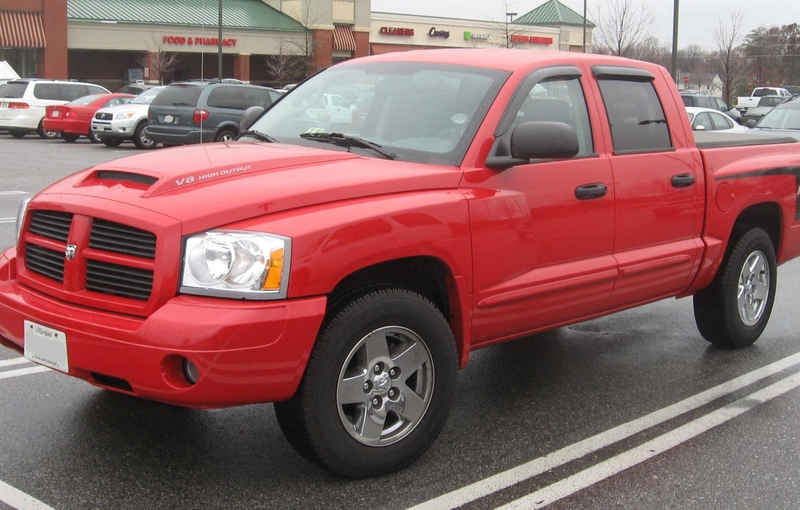
The Dakota trucks often broke down in the middle of driving, making them into a financial nightmare as many of the vehicles had to be recalled or refunded. By 2011, the company had only sold 12,000 Dakotas and decided to shut down the entire operation, discontinuing the Dakota model after five years on the market. The most important thing about pickup trucks is reliability since truck drivers often find themselves in desolate places carrying extremely heavy loads in rough terrain. When your truck can’t provide that, that’s a serious issue.